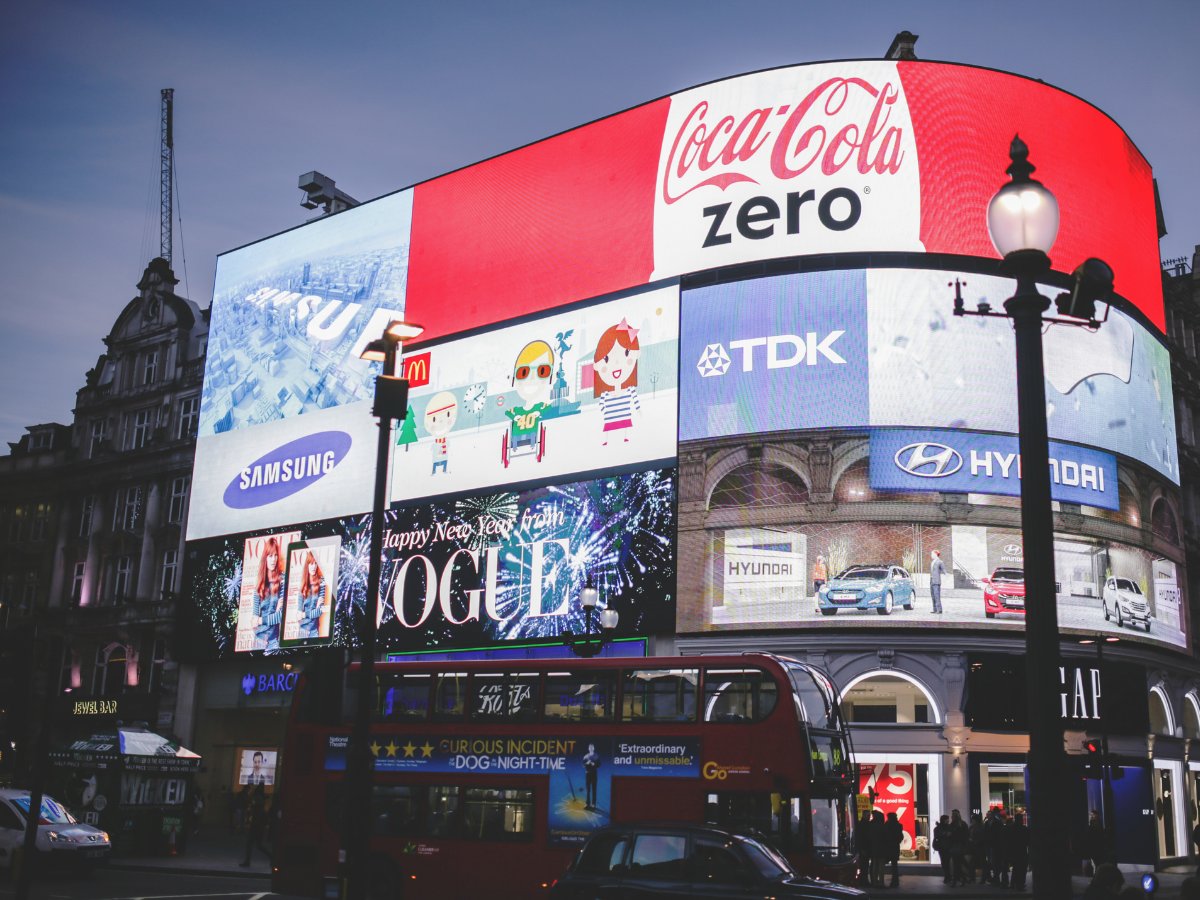Types of Electronic Billboards
Electronic billboards, also known as digital billboards, are a modern and dynamic form of outdoor advertising. They use advanced technology to display high-resolution digital content, capturing the attention of passersby. There are several types of electronic billboards, each with its own unique features and capabilities. Let’s explore some of the common types:
- LED Billboards: These billboards utilize light-emitting diodes (LEDs) to create vibrant and eye-catching displays. LED technology offers exceptional brightness and clarity, ensuring that the content can be easily seen even in bright sunlight or at night. LED billboards are energy-efficient and have a long lifespan, making them a popular choice for advertisers.
- LCD Billboards: Liquid Crystal Display (LCD) technology is commonly found in indoor settings like televisions and computer monitors. However, LCD billboards are also available, providing a cost-effective option for outdoor advertising. Although they may not offer the same level of brightness as LED billboards, LCD displays still deliver sharp images and are suitable for locations with lower ambient lighting.
- Video Walls: Video walls consist of multiple individual screens seamlessly tiled together to create a larger display area. This type of electronic billboard allows for immersive and visually stunning content. Video walls are commonly used in high-traffic areas, such as shopping malls, airports, and large venues, to grab viewers’ attention and deliver impactful messages.
These are just a few examples of the types of electronic billboards available in the market. Advertisers can choose the most suitable option based on their specific requirements, budget, and target audience. It’s important to consider factors such as display size, resolution, and durability when selecting an electronic billboard for an advertising campaign. With the right choice, advertisers can effectively engage with their target audience and leave a lasting impression.
LED Technology and Benefits
LED (Light Emitting Diode) technology plays a crucial role in the functionality and success of electronic billboards. LED billboards have become immensely popular due to their numerous benefits and advancements in technology. Let’s delve into some of the advantages of LED technology:
- Brightness and Visibility: LED billboards are known for their exceptional brightness, making them highly visible even in direct sunlight. This ensures that advertisements are easily seen by a large number of people, maximizing their impact and reach.
- Energy Efficiency: LED technology is renowned for its energy efficiency. Compared to traditional billboards, LED billboards consume significantly less power, resulting in lower operational costs for advertisers. This not only benefits the environment but also reduces overall expenses.
- Longevity and Reliability: LEDs have a longer lifespan compared to other lighting technologies. They can operate for thousands of hours without needing frequent maintenance or replacements. LED billboards are designed to withstand various weather conditions, ensuring their durability and longevity.
- High Resolution: LED displays offer excellent picture quality with high resolution, allowing advertisers to showcase visually engaging and detailed content. This ensures that advertisements are portrayed crisply and attractively, capturing the attention of viewers.
- Dynamic Content: LED billboards enable the display of dynamic content, allowing advertisers to create visually captivating and engaging advertisements. The ability to incorporate animations, videos, and real-time updates enhances the impact of the advertisements and enables effective storytelling.
LED technology has revolutionized the outdoor advertising industry, providing advertisers with versatile and impactful tools to communicate their messages effectively. The benefits of LED billboards, including enhanced visibility, energy efficiency, longevity, high resolution, and dynamic content capabilities, make them an ideal choice for advertisers looking to create a lasting impression and achieve their advertising objectives.
Resolution and Image Quality
When it comes to electronic billboards, resolution and image quality play a crucial role in delivering impactful and visually appealing content. Let’s take a closer look at these factors:
Resolution refers to the number of pixels displayed on the screen. It determines the level of detail and clarity of the images and videos shown on the billboard. Higher resolution translates to sharper and more defined visuals. Electronic billboards typically have high resolutions, allowing advertisers to showcase their content with remarkable detail and precision.
Image quality is influenced by various factors, including the resolution of the display, color accuracy, contrast ratio, and brightness level. High-quality LED billboards offer vibrant colors, deep blacks, and bright whites, ensuring that the content stands out and grabs the attention of viewers.
The advancements in LED technology have significantly improved the resolution and image quality of electronic billboards. Full HD (1080p) and even Ultra HD (4K) resolutions are becoming increasingly common, allowing for stunning visual experiences. These high resolutions contribute to the effectiveness of advertisements by capturing viewers’ attention and delivering messages with exceptional clarity.
It’s important for advertisers to consider the viewing distance when selecting the appropriate resolution for their electronic billboards. A higher resolution may be required for billboards that are viewed from closer distances to ensure that the content remains sharp and legible. On the other hand, billboards viewed from longer distances may not require the same level of resolution, allowing advertisers to optimize costs without compromising the overall visual impact.
Additionally, factors such as brightness control and anti-glare technology are crucial for maintaining clear visibility of the content in varying lighting conditions. Electronic billboards with efficient brightness control can adapt to different ambient lighting environments, ensuring optimal viewing experiences at all times.
Power Consumption and Efficiency
Power consumption and efficiency are important considerations when it comes to electronic billboards. Let’s explore the impact of these factors:
LED technology, commonly used in electronic billboards, is known for its energy efficiency. LED billboards consume significantly less power compared to traditional billboards with fluorescent or incandescent lighting. This energy efficiency not only reduces operational costs but also has a positive environmental impact by reducing carbon emissions.
LED billboards achieve energy efficiency through various means. One of the key factors is the use of light-emitting diodes, which require less energy to produce bright and vibrant displays compared to other types of lighting. Additionally, LED billboards employ advanced power management systems that optimize energy usage, ensuring that only the necessary amount of power is consumed.
Furthermore, many LED billboards feature automatic brightness adjustment capabilities. This feature allows the billboards to adjust their brightness levels based on ambient lighting conditions. During bright daylight hours, the brightness can be increased to ensure optimal visibility, while at night or in dimly lit environments, the brightness can be reduced, conserving energy without compromising the effectiveness of the advertisement.
Efficiency is not only about power consumption but also includes the overall performance and reliability of the electronic billboards. LED billboards are designed to operate for extended periods, often 24/7, with minimal downtime. Their longevity, low maintenance requirements, and resistance to external elements contribute to their efficiency in terms of operational costs and reliability.
When selecting an electronic billboard, advertisers should consider the power requirements, energy efficiency, and any local regulations related to energy usage. By choosing energy-efficient LED billboards, advertisers can not only reduce their carbon footprint but also benefit from long-term cost savings while effectively delivering their advertising messages.
Content Management Systems
Content management systems (CMS) are integral to the effective operation of electronic billboards. A CMS allows advertisers to remotely manage and update the content displayed on their billboards, providing flexibility and control over their advertising campaigns. Let’s explore the importance and functionality of content management systems:
A content management system enables advertisers to schedule, organize, and update their content easily and efficiently. It provides a centralized platform where advertisers can create and upload their advertisements, ensuring that the right content is displayed at the right time. With a CMS, advertisers can customize their advertising campaigns by specifying the duration and frequency of their ads.
One of the key advantages of a content management system is its ability to deliver real-time updates. Advertisers can instantly modify or replace content on their billboards, ensuring that their messages remain timely and relevant. This is especially valuable for dynamic and time-sensitive promotions, such as limited-time offers and event announcements.
Content management systems also facilitate targeted advertising. Advertisers can tailor their messages based on various factors, such as location, demographics, or time of day. This targeting capability allows for more effective and personalized advertising, reaching the intended audience with greater precision.
Another important feature of content management systems is the ability to monitor and analyze the performance of advertisements. Advertisers can track metrics such as impressions, engagement rates, and conversions to evaluate the success of their campaigns. This valuable data helps advertisers make informed decisions and optimize their advertising strategies to maximize results.
Cloud-based content management systems have gained popularity in recent years. They offer scalability, flexibility, and remote accessibility, allowing advertisers to manage their billboards from anywhere with an internet connection. Cloud-based CMS also provide the advantage of easy collaboration between multiple stakeholders, enabling seamless content creation and coordination.
When choosing a content management system for electronic billboards, it’s important to consider factors such as user-friendliness, reliability, and customer support. Advertisers should select a CMS that meets their specific requirements and provides a seamless experience in managing and updating content on their billboards.
Network Connectivity
Network connectivity is a crucial aspect to consider when it comes to electronic billboards. A reliable and robust network connection is essential for the seamless operation and content management of these billboards. Let’s explore the importance and implications of network connectivity:
Electronic billboards typically rely on internet connectivity to receive and update content. A stable network connection ensures that advertisements can be remotely managed, scheduled, and displayed without interruptions. Without reliable network connectivity, advertisers may face challenges in updating content in real-time and delivering their messages effectively.
There are various options for network connectivity depending on the location and infrastructure availability. The most common methods include wired connections such as Ethernet or fiber optic cables, as well as wireless connections such as Wi-Fi, cellular data, or satellite technology. The choice of network connectivity depends on factors such as location, budget, and the reliability of different options.
For billboards located in urban or developed areas, wired connections like Ethernet can provide a stable and high-speed connection. This ensures quick and efficient content updates for timely campaigns. On the other hand, wireless connections such as cellular data or Wi-Fi are more suitable for billboards that are in remote or challenging locations where wired connections may not be feasible.
Network connectivity also plays a vital role in monitoring the performance and health of electronic billboards. Remote monitoring and diagnostics systems rely on network connectivity to provide real-time status updates, allowing advertisers or technicians to quickly identify and address any issues that may arise. This proactive approach ensures minimal downtime and maximizes the effectiveness of advertising campaigns.
Security is another consideration when it comes to network connectivity. Advertisers must ensure that their electronic billboards are connected to secure networks to protect the integrity of their content. This includes implementing suitable firewalls, encryption protocols, and access controls to prevent unauthorized access or tampering.
Weatherproofing and Durability
Weatherproofing and durability are critical factors to consider when installing electronic billboards. These billboards are exposed to various weather conditions and external elements, and their ability to withstand these challenges is crucial for long-term functionality. Let’s explore the importance and benefits of weatherproofing and durability:
Electronic billboards are designed to be durable and weather-resistant. They are built to withstand extreme temperatures, high humidity, rain, snow, and even dust and dirt accumulation. Weatherproofing ensures that the internal components and circuitry of the billboards remain protected and operable in different environmental conditions.
Weatherproofing measures in electronic billboards include the use of sturdy and corrosion-resistant materials for the housing and enclosures. Stainless steel, aluminum, and UV-protected plastics are commonly used to ensure maximum durability. Sealed and gasketed compartments prevent water and dust penetration, while proper ventilation systems prevent overheating and condensation.
Furthermore, electronic billboards are subjected to thorough testing to comply with industry standards and regulations for weather resistance. Rigorous testing includes exposure to humidity, temperature fluctuations, wind, and even simulated heavy rainfall to ensure that the billboards can withstand these elements with minimal impact on performance.
The durability of electronic billboards extends beyond weatherproofing. These billboards are engineered to withstand the rigors of outdoor environments, including vandalism and physical impact. Robust construction and reinforced screens can withstand accidental bumps, scratches, and deliberate attempts at damage, minimizing downtime and repair costs.
Electronic billboards with durable and weather-resistant features provide numerous benefits. Firstly, they have a longer lifespan compared to less durable counterparts, reducing the need for frequent replacements or repairs. This translates to cost savings and increased return on investment for advertisers.
Moreover, weatherproof and durable billboards ensure consistent performance, regardless of the season or weather conditions. Advertisers can have peace of mind knowing that their messages will be displayed reliably, even during harsh weather events. This reliability is crucial for maintaining effective advertising campaigns and meeting advertising goals.
Installation and Maintenance
The installation and maintenance process of electronic billboards are crucial for their long-term effectiveness and performance. Proper installation ensures that the billboards are securely and correctly positioned, while regular maintenance helps in preserving their functionality. Let’s delve into the importance of installation and maintenance:
During the installation process, electronic billboards need to be positioned strategically to maximize visibility and reach. Factors such as height, angle, and location play a significant role in optimizing the impact of the billboard. Professional installation ensures that the billboard is securely mounted, reducing the risk of any structural issues or safety concerns.
Proper cabling and electrical connections are critical during the installation process. The wiring needs to be safely and neatly routed to ensure efficient power supply and connectivity. Adhering to electrical and industry standards helps prevent power disruptions and potential hazards.
Regular maintenance is essential to keep electronic billboards in optimal working condition. Maintenance tasks include cleaning the display surface, inspecting and repairing any damage or loose connections, and ensuring that the electrical components are functioning correctly. Regular inspections and preventative maintenance help identify and address any issues before they escalate, minimizing downtime and maximizing the lifespan of the billboard.
In addition to routine maintenance, software updates and firmware upgrades are crucial for electronic billboards. These updates often include bug fixes, security enhancements, and new features. Keeping the software up to date ensures optimal performance and compatibility, allowing advertisers to take advantage of the latest technologies and capabilities.
It’s recommended to work with professional installers and maintenance providers who have experience with electronic billboards. They have the expertise and knowledge to handle the intricate installation process and ongoing maintenance tasks effectively. Professional services ensure that the billboards are installed correctly and can provide timely assistance and support in case of any technical issues.
Proactive maintenance and prompt repairs are key to minimizing downtime and ensuring a seamless advertising experience. Regular monitoring and performance checks help identify any potential issues early on, allowing for timely intervention and preventing further complications.
By investing in proper installation and maintenance, advertisers can ensure that their electronic billboards operate reliably, deliver impactful messages, and achieve the desired advertising outcomes.
Dynamic Content and Targeted Advertising
Dynamic content and targeted advertising are key advantages of electronic billboards, allowing advertisers to deliver personalized and engaging messages to their target audience. Let’s explore the importance and benefits of dynamic content and targeted advertising:
Electronic billboards provide the flexibility to display dynamic content, such as animations, videos, and real-time updates. This dynamic content captivates viewers and creates a memorable advertising experience. By incorporating motion and interactivity, electronic billboards grab attention, making them highly effective in crowded and competitive advertising environments.
Real-time updates are especially valuable for time-sensitive promotions and events. Advertisers can modify their content instantly, ensuring that their messages remain relevant and timely. Whether it’s displaying the latest offers, providing countdown timers, or promoting live updates, electronic billboards enable advertisers to communicate information in a timely manner.
Targeted advertising is another advantage made possible by electronic billboards. Advertisers can tailor their messages based on various criteria, such as location, demographics, or time of day. This level of customization enhances the effectiveness of advertisements, allowing advertisers to engage with their target audience more effectively.
For example, an advertiser can display different advertisements depending on the time of day or day of the week, ensuring that the content is relevant to the specific audience during a particular time period. They can also target specific locations, displaying different content based on the demographics of the surrounding area.
Targeted advertising not only improves the relevance and impact of the messages but also helps optimize ad spend. Advertisers can allocate their resources more efficiently by focusing on specific target markets or demographics. By avoiding generic messages and delivering tailored content, electronic billboards enhance viewer engagement and increase the chances of converting viewers into customers.
Furthermore, electronic billboards can be integrated with various technologies, such as sensors, cameras, and data analytics, to gather real-time data about the viewers. This data can be used to refine targeting strategies and deliver even more personalized advertising experiences. Advertisers can analyze audience behaviors, preferences, and engagement levels, allowing for continuous optimization of their campaigns.
Dynamic content and targeted advertising allow advertisers to be more strategic and creative in delivering their messages. By leveraging these advantages, electronic billboards can deliver more impactful and relevant content, effectively capturing the attention of viewers and driving desired actions.
Regulations and Limitations
Like any form of advertising, electronic billboards are subject to regulations and limitations imposed by local authorities and governing bodies. These regulations are in place to ensure public safety, minimize visual pollution, and maintain the aesthetic and cultural integrity of the surrounding area. Let’s explore the key regulations and limitations that apply to electronic billboards:
Size and Placement Restrictions: Local regulations often specify the permitted size, height, and location of electronic billboards. These restrictions ensure that the billboards do not obstruct views, pose safety hazards, or detract from the overall landscape. Compliance with size and placement regulations is essential to avoid fines or legal consequences.
Content Restrictions: Advertisements displayed on electronic billboards must comply with local regulations regarding content. This includes restrictions on advertising certain products or services, displaying offensive or misleading content, or infringing on intellectual property rights. Advertisers should ensure that their content meets the legal requirements in terms of language, imagery, and messaging.
Brightness Control: Many areas have regulations in place to control the brightness of electronic billboards. These regulations aim to minimize distractions to drivers and nearby residents, ensuring road safety and maintaining a comfortable environment. Advertisers must adhere to these regulations to prevent excessive brightness that may cause visual discomfort or compromise the safety of drivers.
Timing Restrictions: Some areas impose timing restrictions on when electronic billboards can display their content. These restrictions may limit the operating hours or dictate certain blackout periods during quiet times or specific events. Advertisers should be aware of these limitations and adjust their content scheduling accordingly to comply with local regulations.
Environmental Considerations: In eco-sensitive areas, there may be regulations in place to protect the environment from light pollution or excessive energy consumption. Advertisers should ensure that electronic billboards comply with these regulations by using energy-efficient components, employing automatic brightness adjustment, and minimizing light spillage beyond the desired viewing area.
Permitting and Licensing: Electronic billboards usually require permitting and licensing from local authorities. Advertisers must obtain the necessary permissions and follow the required processes to install and operate the billboards legally. Failure to obtain the appropriate permits can result in fines or even the removal of the billboard.
It’s crucial for advertisers and operators of electronic billboards to be familiar with the regulations and limitations specific to their location. Compliance with these regulations not only ensures legal operation and avoids penalties but also demonstrates social responsibility and respect for the community.






